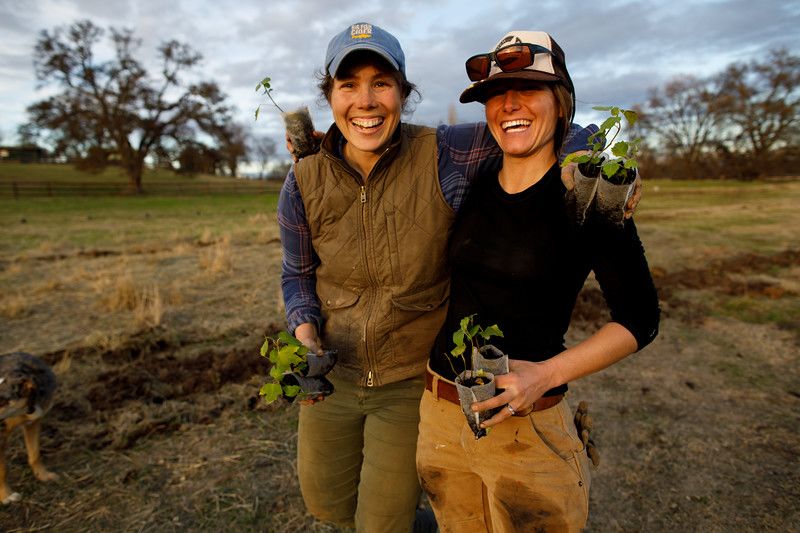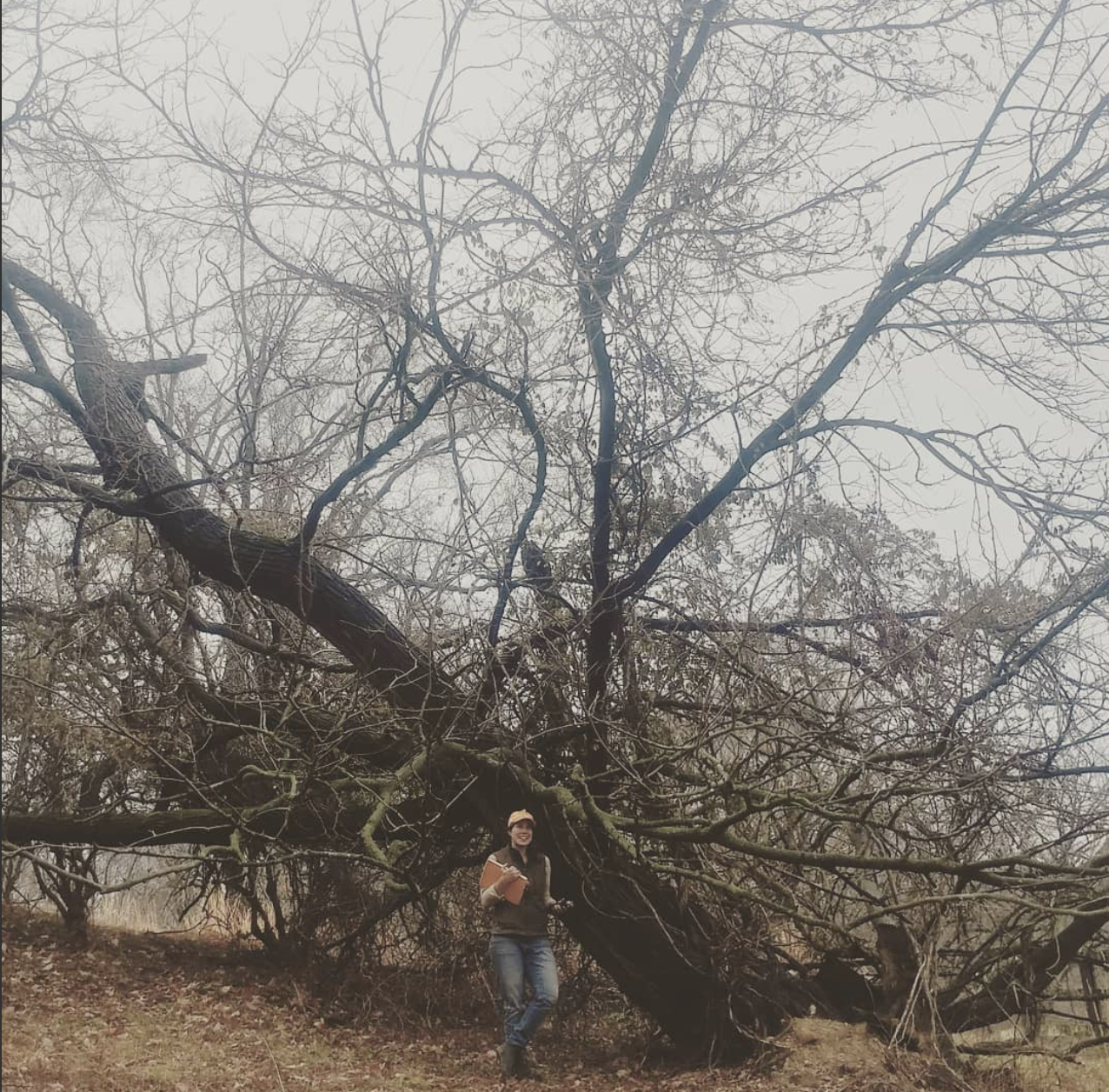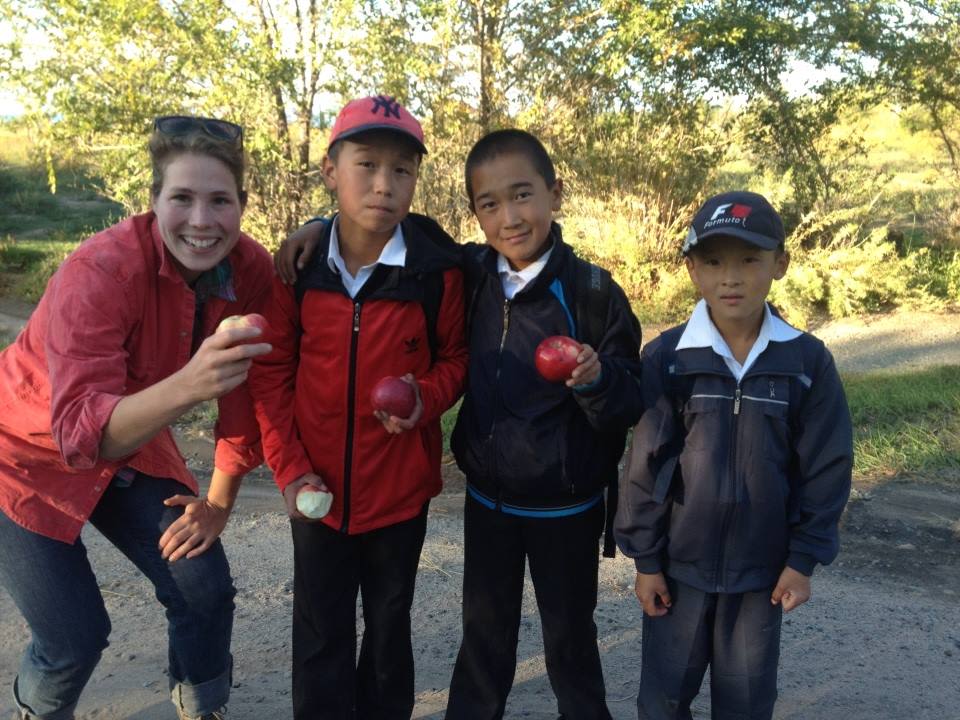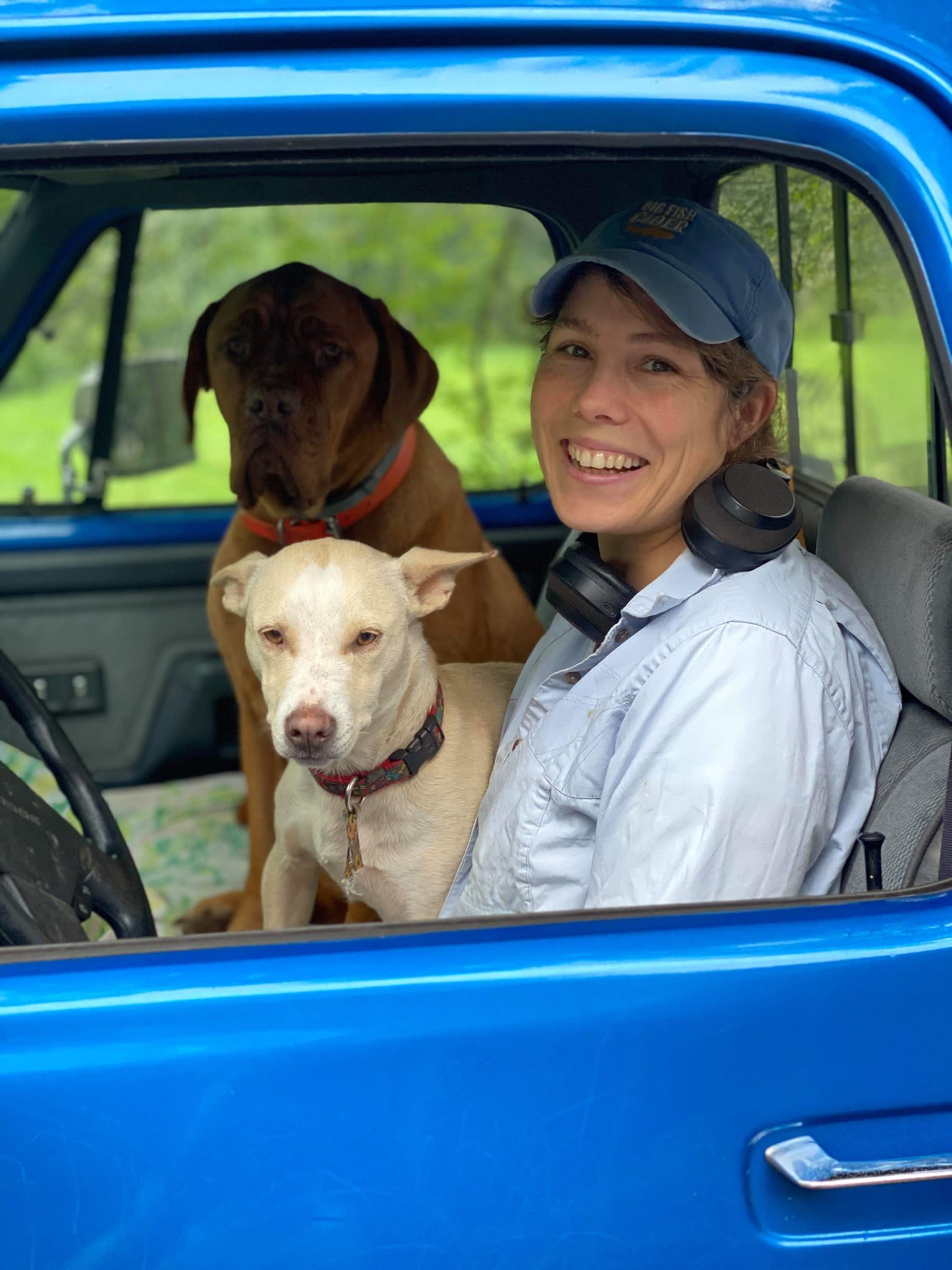The Apple Queen’s Gambit
Inside Eliza Greenman’s obsessive efforts to save the world’s apples.

FOR SOME TIME, Eliza Greenman, C’06, had admired the apple tree on her neighbor’s property in Loudoun County, Virginia. She could see it from the road when she drove past, and as an apple historian and cultivator, she made it her business to learn everything she could about the scraggly, half-dead thing. Her research revealed it was a Loudoun Pippin, and it had stood at the top of the driveway since the mid-19th century, back when Quakers had farmed the property. Greenman was looking forward to contacting the landowner one day and asking for cuttings of the tree for grafting in her own orchard. But she never got around to it, and when the property changed hands last year, the new owner chopped down the tree. The owner likely didn’t know it was the last Loudoun Pippin on earth. He no doubt viewed it as an eyesore, an impediment to exciting new landscaping plans. But for Greenman, the episode was an all-too-common tragedy. “There’s such a disconnect between people and the apple trees in their own backyards,” she says. “People cut them down because they are sour or wormy, or the apples are ugly. But they don’t understand what we are losing.”
What we are losing is biodiversity, and while most people think about that crisis in terms of disappearing elephants and rainforest, Greenman views it in terms of apples. As the owner of HogTree and one of the world’s leading apple experts, Greenman is spreading the word that apple varieties—or “cultivars”—are disappearing from the planet every day. At the turn of the 20th century, at least 17,000 cultivars were grown in the United States. Today the number is closer to 7,000. When Greenman is not speaking to foundations, environmental groups, Audubon Society chapters, and universities (she was recently on the Mountain to lecture forestry students on the commercial value of obscure apple varieties), she’s crisscrossing the country in search of remnant stands of largely forgotten cultivars. National Public Radio placed her at the forefront of the growing “ugly apple movement.” Maybe most importantly, she’s growing all manner of cultivars on her experimental farm in Virginia in an effort to find commercial value for types of apples few people have ever heard of.
“In order to save this biodiversity, we have to find a use for all of these apples.”
One of the main uses Greenman has found for apples is livestock feed. The name HogTree comes from her practice of grazing hogs in her six-acre orchard. While the raising of livestock in forests is nothing new, Greenman’s approach to it is, most notably the leveraging of what she calls a “drop scheme.” She has organized her orchard so that dozens of different apple varieties (along with pears, mulberries, and persimmons) produce fruit in succession from June to November, a precisely timed strategy that blankets the ground with fruit that entire period and feeds her foraging hogs. In seven months, she can grow 25-pound piglets into 300-pound adults, with sales of the resulting high-end charcuterie going to support the entire operation. For now, Greenman is supplementing the diets of her hogs; but once all her trees become fully developed fruit producers, her end goal is to eliminate the need for feed purchase altogether. Hog Tree is an effort to reacquaint the United States with a moribund agricultural system from its own past, a 19th-century practice that is more holistic, self-sustaining, and economical than most farming practiced today. Most importantly, it requires loads of different kinds of apples to succeed. “In order to save this biodiversity,” Greenman says, “we have to find a use for all of these apples.”

Greenman at the base of the last known Downing's everbearing mulberry tree.
Greenman at the base of the last known Downing's everbearing mulberry tree.
Greenman has always had a thing for trees. She grew up in the Tidewater region of southeast Virginia, running through forests with her pals, climbing mulberries and maples, and spending time in treehouses. About the only thing that competed with her love of trees was soccer, which is what took her to Sewanee. She played middle forward for the Tigers. But she was thrilled that the University has a forestry program, and she knew from day one that forestry would be her major. She especially appreciated the guidance of professors Karen Kuers and Ken Smith. “They taught me to think outside the box in terms of trees and everything connected to them—soils, ecology, communities,” she says. “That helped me move from forestry to farming. Not many people in my field have that background. If I had studied forestry at a land-grant university, my education would have been much narrower.”
After college, Greenman held a number of adventurous arboreal jobs. For the U.S. Forestry Service, she inventoried trees in the most remote corners of California, a job that required 10-day stretches of bushwhacking through backwoods and up mountains. “It was pretty isolating,” she says. “I learned a lot about myself and being alone.” A similar job in the bayous of Louisiana revealed to her something that most people since the advent of agriculture tend to forget—there are tons of trees in the wild that produce fruit and nuts. She also spent time abroad studying Germany’s culture of community forestry—through a scholarship from the U.S. State Department—but the most lasting impression from that experience was visiting the daily farmer’s markets, where she found individual stalls selling more than 50 different types of apples. The diversity fired her imagination.
“It was this instant obsession. It was a lightning bolt. I suddenly wanted to grow apples and prune them and hone this craft the rest of my life.”
It was on a bridgeless island off the coast of Maine in 2009 that Greenman realized her destiny was apples. She had a sustainability fellowship on Little Cranberry Island and was charged with pruning the many apple trees growing randomly across the island. Her lightbulb moment came while sitting in a tree one day, holding a chainsaw, and receiving instruction from an experienced pruner. “It was this instant obsession,” she recalls. “It was a lightning bolt. I suddenly wanted to grow apples and prune them and hone this craft the rest of my life.” She says she “came out” to her family as a budding apple farmer, and for Christmas that year she asked her mother for a chainsaw. That was when her grandmother told her that her great-great-grandfather had been an apple farmer in North Carolina. Not only that, the family had produced its own apple cultivar, the Dula Beauty. “It must be this ancient genetic thing inside me,” Greenman says of her career decision. “There’s no other way to explain why, in a matter of a few seconds, sitting in that tree, I would become so completely enamored with apples.”
Greenman proceeded to apprentice under notable New England apple orchardists like John Bunker, who has a nursery with 200 apple cultivars, and Francis Felton, who has 160. She steeped herself in the history of apples in America, a sad tale of the rise of industrial agriculture and the loss of traditional ecological knowledge. Until the 1800s, farmers used all kinds of apples to make molasses (before the growth of the sugarcane industry), apple butter, and an endless variety of sauces and ciders. They fed their livestock sweet apples before butchering. But then big agricultural interests reduced the market to a handful of varieties, with an emphasis on beauty, and most cultivars faded into obscurity.

Greenman with schoolboys in Kyrgyzstan, where she found wild orchards in which people have been grazing livestock for generations.
Greenman with schoolboys in Kyrgyzstan, where she found wild orchards in which people have been grazing livestock for generations.
As much as Greenman loved growing apples, aspects of the industry drove her nuts, especially the heavy use of pesticides and fungicides. She even got poisoned once spraying trees with Felton. “I was sick and vomiting for several days,” she says. “I decided this was not OK.” She began hunting for better genetics, for cultivars that can naturally deal with disease and pests. Her research led her to Kyrgyzstan, the genetic homeland for 75 percent of all temperate fruit trees. The apple cultivars there have 50-million-year-old genetics, and Greenman hoped to start her own orchard with seeds from Kyrgyz cultivars that could withstand anything. But what she discovered there surprised her. Yes, there are naturally disease-resistant apple trees in Kyrgyzstan, but it’s not all genetics. Greenman found wild orchards where people have been grazing livestock for generations, where symbiotic relationships have developed among people, animals, and trees. For example, whenever a worm bores into an apple in these orchards, the tree drops the apple. But before the worm can enter the soil and pupate into something hazardous for trees, a sheep or cow eats the apple, which halts the pests’ life cycle. The sheep scores a meal, the tree dodges potential disease, and people ultimately get meat. Greenman left Kyrgyzstan with an important lesson: “I learned that I have to put animals in my orchards.” (She also, apparently, made quite an impression on the small Central Asian republic. The country’s leading newspaper dubbed her the “Apple Queen.”)

Since starting her farm in Virginia in 2018, Greenman has amassed 45 apple cultivars, 32 pear, 25 mulberry, and lots of persimmon and nut trees. She has outgrown her six acres, and in order to keep collecting more varieties, she’s looking to purchase a 30-acre place. Meanwhile, she continues researching and hunting for obscure cultivars through an organization she co-founded called the Fruit Explorers. She has always cared about the name and history of every cultivar she finds but admits this can take time. It may have kept her from acting quickly enough to save that Loudoun Pippin on her neighbor’s property. “After that, I stopped caring about what these old fruit trees were called and started to take cuttings from anything that looked old and endangered,” she says, “with the hopes of identifying them later and saving them in the meantime.”
